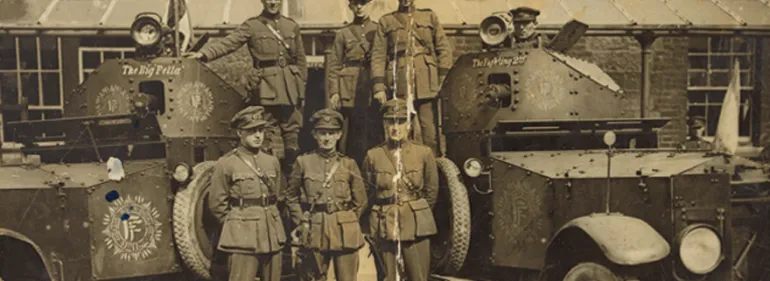
1922-1923
1922-1923
Civil War 1922-1923
In April 1922, following the Anglo-Irish Treaty, Wellington Barracks was handed over by British troops to those of the new Irish Free State. This should have been a joyful moment but in fact it inaugurated perhaps the darkest period in the history of the barracks; the Irish Civil War.
In the Civil War, the barracks (in 1923 renamed Griffith Barracks, after Arthur Griffith, President of the Executive Council of the Irish Free State who died in August 1922) was again used as a training depot and was held by around 600 men, many of them new recruits into the National Army. It also housed the Army's Intelligence Department, led by former IRA Intelligence Officer Charles Dalton and other former members of Michael Collins' Squad. The Intelligence Department was in charge of arresting and interrogating anti-Treaty IRA suspects, over 250 of whom were held in the barracks at any one time in late 1922 prior to imprisonment elsewhere.
There are several firsthand accounts of torture of prisoners in the barracks and a number of cases of suspected summary killings by Intelligence officers based in Griffith Barracks. For their part, the anti-Treaty IRA guerrillas attacked the barracks in November 1922, machine gunning unarmed soldiers as they stood to for morning parade, killing one and wounding eighteen, along with one civilian. One of the attackers, James Spain, was caught by the troops and killed in reprisal. In addition, in revenge for the attack, the 200 prisoners locked in the barracks' gym were fired on, wounding several. More fighters on both sides and civilians died in and around the barracks in these months, and this bloodshed continued, albeit on a smaller scale, until the end of the Civil War in May 1923.
